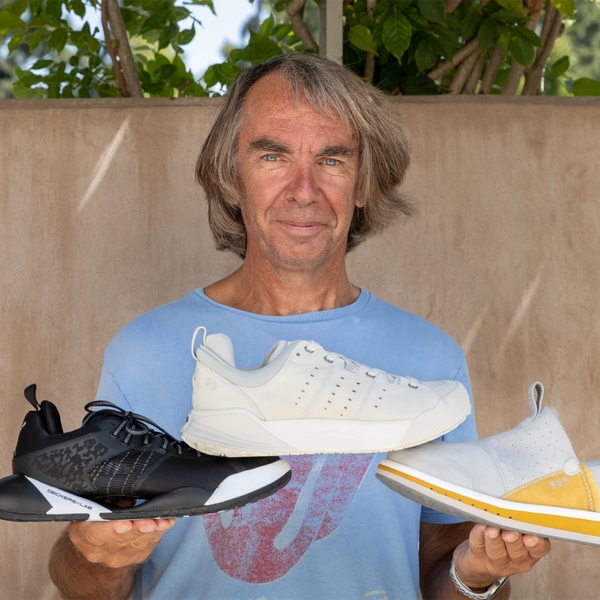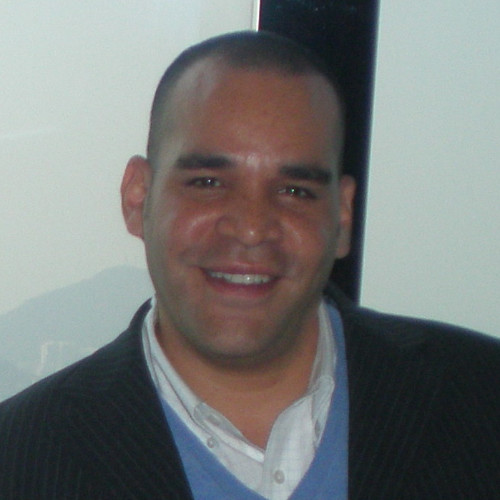The answer to “Who makes Hoka shoes?” is Deckers Outdoor Corporation. This blog post dives deep into the Hoka shoe company, exploring its Hoka brand origin, manufacturing locations, Hoka production processes, and the role of Deckers Outdoor Corporation as the Hoka parent company. We’ll uncover where Hoka shoe factories are located, shed light on Hoka headquarters, and delve into the intricacies of Hoka ownership.

Image Source: cdn.outsideonline.com
The Hoka Brand Origin Story
Hoka shoes came from a simple idea: make running downhill easier. Two trail runners, Nicolas Mermoud and Jean-Luc Diard, wanted shoes that would let them run faster downhill. They felt that running shoes hadn’t changed much in a long time. So, in 2009, they started Hoka One One (pronounced “O-nay O-nay”), which means “fly over the earth” in Maori.
Their first shoes were big and cushioned. They looked different from other running shoes. But runners loved them because they felt good and helped them run easier. Hoka quickly became known for its thick midsoles and comfortable design.
Deckers Outdoor Corporation Takes Over: The Hoka Shoe Company Evolves
In 2013, Deckers Outdoor Corporation bought Hoka. Deckers owns other shoe brands like UGG, Teva, and Sanuk. This acquisition helped Hoka grow faster. Deckers had the money and resources to help Hoka reach more runners and expand its product line. Deckers continues to operate as the Hoka parent company.
How Deckers Influenced Hoka
Deckers helped Hoka in many ways:
- More Money: Deckers invested more money in Hoka. This allowed Hoka to design new shoes and improve old ones.
- Better Marketing: Deckers helped Hoka reach more people through marketing. More runners learned about Hoka shoes.
- Global Reach: Deckers helped Hoka sell shoes in more countries. Hoka became a global brand.
- Better Production: Deckers improved how Hoka shoes were made. This made the shoes better quality and more consistent.
Fathoming Hoka Production: Where Are Hoka Shoe Factories?
Hoka shoes are made in factories in different countries. Most of the production takes place in Vietnam and China. These countries have factories with the skills and equipment to make Hoka shoes.
Hoka Manufacturing Locations: A Closer Look
While Deckers Outdoor Corporation doesn’t release exact factory lists, here’s what we know about Hoka manufacturing locations:
- Vietnam: A significant portion of Hoka shoe production occurs in Vietnam. Many athletic shoe brands use factories in Vietnam because of skilled labor and established manufacturing infrastructure.
- China: China is another key location for Hoka shoe factories. The country has a large manufacturing base and experience in producing footwear.
- Other Countries: It’s possible that some Hoka production also takes place in other Asian countries, though Vietnam and China are the primary locations.
The Hoka Manufacturer’s Role
The Hoka manufacturer is responsible for:
- Making the shoes: The factories turn Hoka’s designs into real shoes.
- Getting materials: They buy the materials needed to make the shoes, like rubber, foam, and fabric.
- Checking quality: They make sure the shoes are made correctly and meet Hoka’s standards.
- Shipping the shoes: They ship the shoes to stores and warehouses around the world.
Unveiling the Manufacturing Process of Hoka Shoes
Making Hoka shoes is a complex process that involves many steps. Here’s a simplified overview:
- Design: Hoka designers create the shoe design, choosing materials and features.
- Prototyping: A prototype (sample shoe) is made to test the design.
- Material Sourcing: The factory buys the needed materials.
- Cutting and Stitching: The materials are cut into the right shapes and stitched together to form the upper part of the shoe.
- Midsole Creation: The midsole, which provides cushioning, is made from special foam.
- Assembly: The upper part of the shoe is attached to the midsole and outsole (the bottom of the shoe).
- Finishing: The shoe is cleaned, laces are added, and it’s checked for any problems.
- Packaging: The shoes are put in boxes and prepared for shipping.
Materials Used in Hoka Shoes
Hoka shoes use different materials to provide comfort, support, and durability:
- Midsoles: Hoka is known for its thick midsoles made from EVA foam (Ethylene-vinyl acetate) or other special foams. These foams provide cushioning and absorb impact.
- Outsoles: The outsoles are made from rubber. Some Hoka shoes use Vibram rubber for better grip.
- Uppers: The uppers can be made from different materials, like mesh (for breathability) or synthetic materials (for support).
- Insoles: The insoles provide extra cushioning and support inside the shoe.
Hoka Headquarters and Operations
The Hoka headquarters are located in Goleta, California. This is also where Deckers Outdoor Corporation is based. The Hoka team at headquarters works on designing new shoes, marketing the brand, and managing the business.
Teams Working at Hoka Headquarters
Several teams contribute to the success of Hoka:
- Design Team: Creates new shoe designs and improves existing models.
- Marketing Team: Promotes Hoka shoes and reaches new customers.
- Sales Team: Works with retailers to sell Hoka shoes.
- Operations Team: Manages the supply chain and makes sure shoes are made and delivered on time.
- Finance Team: Handles the financial aspects of the business.
Hoka Ownership: Who Really Owns Hoka?
Deckers Outdoor Corporation owns Hoka. Deckers is a publicly traded company, which means that its ownership is distributed among shareholders. These shareholders include individuals, investment funds, and other institutions who own stock in the company.
Deckers Outdoor Corporation: A Publicly Traded Company
As a publicly traded company, Deckers is subject to regulations and oversight by bodies like the Securities and Exchange Commission (SEC). This structure also mandates certain levels of transparency in their operations.
How Hoka Contributes to Deckers’ Success
Hoka has become a very important brand for Deckers. Hoka’s sales have grown rapidly in recent years. This has helped Deckers increase its overall revenue and profit. Hoka is now one of Deckers’ biggest and most successful brands.
The table below summarizes Deckers Outdoor Corporation brands and their importance in 2023:
| Brand | Key Features/Products | Contribution to Deckers (Approximate) |
|---|---|---|
| UGG | Boots, slippers, casual footwear | 40% |
| Hoka | Performance running shoes | 30% |
| Teva | Sandals, outdoor footwear | 15% |
| Sanuk | Casual footwear | 5% |
| Other Brands | Mixture of brands | 10% |
Note: The percentages are approximates based on available financial information for 2023 and are subject to change.
Grasping Hoka’s Sustainability Efforts
Hoka is working to make its shoes more sustainable. They are using more recycled materials and trying to reduce waste. While they are not perfect, they are taking steps to reduce their impact on the environment.
Examples of Hoka’s Sustainability Initiatives
- Recycled Materials: Hoka is using recycled materials in some of its shoes, like recycled polyester in the uppers.
- Reducing Waste: Hoka is working to reduce waste in its factories and supply chain.
- Sustainable Packaging: Hoka is using more sustainable packaging materials.
- Ethical Sourcing: Hoka is working to ensure that its materials are sourced ethically.
- Durability: By making durable shoes, Hoka contributes to less consumption, reducing the environmental footprint related to frequent replacements.
Interpreting the Future of Hoka
Hoka is expected to continue growing in the future. The brand has a strong following among runners and is expanding into new markets. Deckers’ support and resources will help Hoka continue to innovate and reach more customers.
Trends That Will Shape Hoka’s Future
- Continued Growth in Running: Running is becoming more popular, which will drive demand for Hoka shoes.
- Expansion into New Categories: Hoka is expanding into new categories, like hiking and walking shoes.
- Focus on Sustainability: Consumers are increasingly demanding sustainable products, so Hoka will need to continue its sustainability efforts.
- Technology: Hoka will likely incorporate new technologies into its shoes to improve performance and comfort.
- Personalization: Customization of running shoes can become a growing trend. Hoka may explore technologies and services to offer more personalized fitting and performance enhancements.
Frequently Asked Questions (FAQ)
Here are some frequently asked questions about Hoka shoes and their manufacturing:
- Are Hoka shoes made in the USA? No, Hoka shoes are not made in the USA. They are primarily manufactured in Vietnam and China.
- Does Deckers own other shoe brands besides Hoka? Yes, Deckers Outdoor Corporation owns several other shoe brands, including UGG, Teva, and Sanuk.
- Are Hoka shoes good for your feet? Many people find Hoka shoes to be very comfortable and supportive. The thick midsoles provide cushioning and can help reduce impact. However, it’s always best to try on shoes and see how they feel for your individual feet.
- How can I tell if my Hoka shoes are genuine? Buy Hoka shoes from authorized retailers. Check the quality of the materials and construction. Look for the Hoka logo and branding.
- Where can I buy Hoka shoes? You can buy Hoka shoes at running shoe stores, sporting goods stores, and online retailers.
- What is the Hoka return policy? Return policies may vary depending on the retailer. Please check with where you bought the shoes regarding specific return details.
- How do I care for my Hoka shoes? Clean your Hoka shoes with a mild soap and water. Let them air dry. Avoid putting them in the washing machine or dryer.
Conclusion
Hoka shoes are made by Deckers Outdoor Corporation, a company that owns several footwear brands. Hoka’s success is due to its innovative designs, comfortable cushioning, and Deckers’ resources. While the Hoka manufacturer’s factories are primarily located in Vietnam and China, the Hoka headquarters remain in California. The Hoka shoe company continues to evolve, driven by a commitment to performance, comfort, and increasingly, sustainability. As Hoka grows, it will continue to be a significant player in the athletic footwear market, impacting both runners and the broader industry.

David Ruperto is a Footwear Engineer with expertise in 3D printing, design, and pattern making. With a background in Fine Arts from CUNY and training from SLEM and Cordwainer’s Savannah, he blends creativity with innovation. Based in New York, he shares his knowledge on BestForShoes.com, helping others explore the world of footwear.
